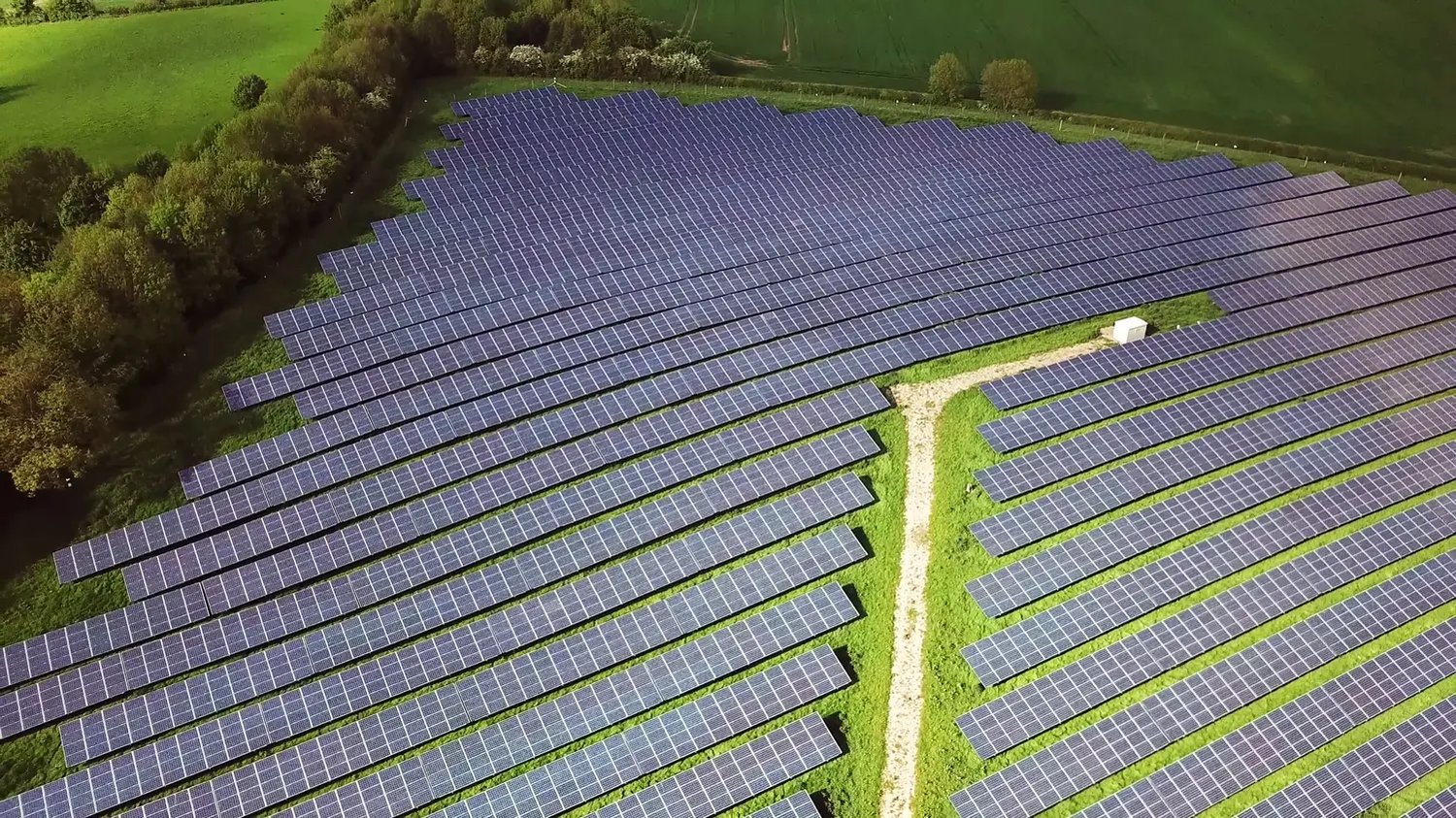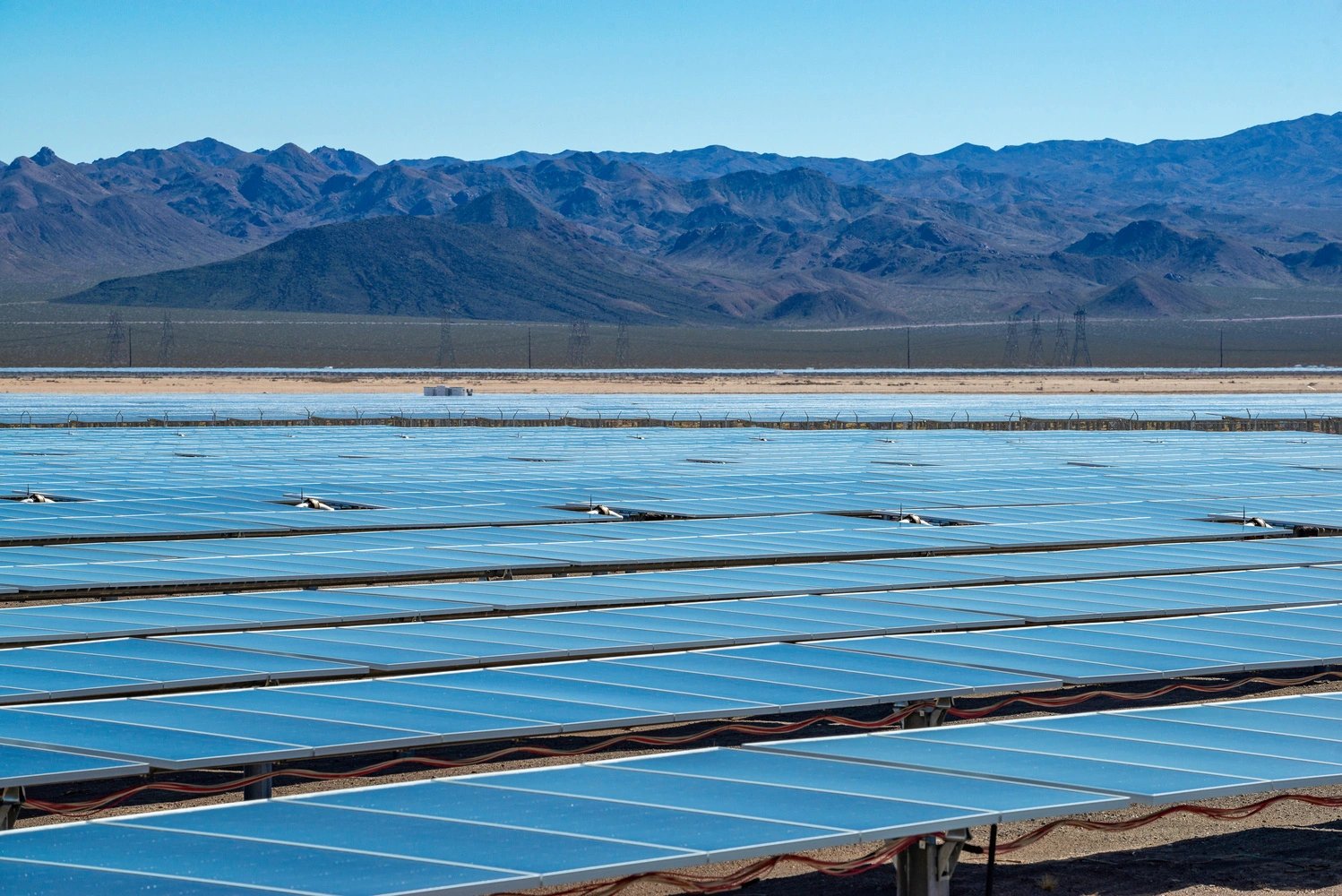Solar Farm Land Requirements
Free Permitting Checklist
Practical Tips to Avoid Environmental Risk on all Your Projects
Download our environmental permitting checklist to get a step-by-step list of ways to protect your project from the 9 most common environmental risks.
Download Your Checklist.webp?width=1500&height=1000&name=AdobeStock_240944542%20(1).webp)
As solar farm development continues to boom, many regulations exist to ensure the consideration of the safety of the project, environment, and local community. These requirements exist for land use, environmental interaction, and local zoning laws. Before breaking ground on a new solar project site, land developers should be cautious about the red tape that comes with the allotted land use for their site.
Utility-Scale Land Requirements
How Big Are Large-Scale Solar Facilities?
Utility-scale solar systems can vary in size and energy output. These sites need enough space to support the solar equipment necessary for its desired generating capacity- typically occupying around 3,200 acres and containing hundreds of thousands of solar panels. It takes roughly 6 to 8 acres to house the solar equipment and panel rows for a 1 MW site. Many sources define utility-scale as producing over 20MW; therefore, these projects need large acre sites to achieve this goal.
Ground Mounted Solar Panels
These solar panels are more than simple solar arrays of photovoltaic cells that absorb sunlight. They are large, powerful pieces of technology. Each solar panel takes up a significant amount of space and yields potential environmental impacts. These panels absorb the light used to produce some of our renewable energy and transfer this absorbed sun power to their sister equipment on these sites. These panels require space between each row, specific installation, removal, cleaning, and other maintenance for maximum efficiency. These solar panels cost thousands of dollars and are roughly 6 feet by 6 feet in size.
Power Generation Requirements and Land Size
To support the electrical grid, each utility-scale solar site must generate a fair amount of solar energy. Additionally, this energy cannot yet be stored, meaning these sites must continue to produce this energy. The solar power production of a site aligns with its location, equipment efficiency, and maintenance of the materials.

Land Use, Zoning, and Local Regulations
Before a solar company breaks ground on its site, it must ensure its project can exist on that land according to local ordinances and zoning rules. Agricultural land, solar lands, and real estate sites will all have to ensure they follow regulations regarding building sizes and what equipment can exist on the site. Regulations regarding solar installations and their allotted proximity to a substation or other features may impede site plans. Additional restrictions exist depending on the type of proposed solar project. For example, a community-scale solar PV system must follow different zoning laws than a utility-scale or roof-mounted solar system.
Current regulations limit the amount of solar power in some regions. As energy industries outside of fossil fuels become more prevalent, many areas are working on rewriting zoning laws to allow the development of solar farm projects.
Solar Land Lease Rates
How Much Does a Solar Farm Cost?
Solar farms typically cost $890,000 and $1.01 million per megawatt- or $0.89 to $1.01 for each watt. Solar development comes with many costs beyond the solar equipment itself. These additional costs can include the land, labor, maintenance of equipment, environmental consulting fees, and mitigation costs.
Project costs are handled in various ways. For example, different commercial solar financing options allow developers to structure their lease agreement costs and upfront expenses differently depending on their needs. A power purchase agreement offers additional upfront cost flexibility than a solar loan, allowing flexibility for developer's fees. Additionally, developers may see a return on some of their expenses by taking advantage of solar industry tax credits provided via the Solar ITC extension.
Lease rates depend upon the financing structure chosen by the developer. These lease rates are typically paid monthly and either a set cost paid back to the financer or correlative to the site's energy production.
Free Permitting Checklist
Practical Tips to Avoid Environmental Risk on all Your Projects
Download our environmental permitting checklist to get a step-by-step list of ways to protect your project from the 9 most common environmental risks.
Solar Farm Location Requirements
When developing a solar farm, the slope of the site and what is nearby is just as important as its size. Features present on the site’s land and sharing the sky nearby play a critical role in the survival of a solar site. Due to this, proper site research is a requirement of solar farm development to ensure project success.
Site Climate
Though solar panels rely on the sunshine for their power, they are sensitive to heat. Extreme temperatures can cause the panels to malfunction or break altogether. Due to this, it is necessary that land developers find the perfect climate for their site. For example, the Arizona desert may not be the most suitable place for a solar farm due to its long period of extreme heat. Solar developers must do proper research to ensure their solar farm is on the optimal site for their project’s survival.
Environmental Features
The environmental features present on a site can disrupt the success of a solar farm. Though an open, unforgiving desert is not an optimal place for a solar farm, neither is a shady region with significant tree cover. Extensive tree cover will obstruct the sunlight necessary to create solar energy. The shade from these trees can limit available sunshine in addition to the multiple hours a day of little to no sunshine. This tree cover can lead to an inefficient site that is not producing enough megawatts of energy to cover its building or maintenance costs. Additionally, these trees may by home to protected species, leading to additional expenses, delays, and environmental regulations for project costs.
Similarly, areas predominately surrounded by wetlands do not serve as ideas sites for solar farms. These areas are better served as conservation areas rather than solar sites. The conditions of a wetland make installation and maintenance of solar farms incredibly difficult for workers. A high presence of waterbodies on a site also lead to additional environmental costs and actions, further complicating a solar project.
Nearby Substations
The energy created by a solar farm needs to enter the electric grid. Solar sites must be relatively close to substations and utility lines to do this. A range of roughly 5 miles or less should be maintained between a utility substation and a solar farm. Additionally, it is recommended that a three-phase distribution line is around 0.2 miles from the site. By maintaining this proximity, project risk and transportation requirements are lessened for the site.
Slope of the Solar Farm
The slope of a site can impact the energy output of a site. This is due to the shade cover from the surrounding, elevated solar panels or land- like the impact of surrounding trees. Land developers should seek large, open, flat pieces of land for their solar sites to avoid these impacts on energy production. In the event flat land is not attainable, land with a five-degree slope or less can be used for the site. When working with a sloped site, south facing rows of solar panels should be built for optimal energy production.

Solar Farm Development Environmental Requirements
Site Assessment
An environmental site assessment ensures that a piece of land is ready for a solar project. This assessment outlines the protected natural resources on the site. Environmental consultants perform this assessment as part of the initial environmental due diligence process. Features such as floodplains, wetlands, or endangered species can delay or stop a project's development entirely. As a rule of thumb, developers should expect to receive this site assessment report from environmental consultants in 4-6 weeks. Environmental due diligence software, such as Transect, provides this assessment in minutes. This software can locate additional features such as transmission lines, slope, and ephemeral waters on a project site. Should this site assessment be performed earlier in the development process, it can aid in site selection and help eliminate sites that are not viable for the proposed project’s needs.
Permitting and Mitigation Efforts
These protected features require specific environmental permitting and mitigation efforts. These can look like obtaining a permit to interact with protected waters that serve a local community or limiting carbon emissions from a power plant. These permits and regulations exist at local, state, and federal levels and will vary at each local level. For example, rules for New York waters look drastically different than those for Illinois waters or Pennsylvania waters. Various organizations exist to ensure developers properly instate these efforts. The interconnection between project development and the environment is well known, meaning agricultural production, real estate, fossil fuels, and clean energy alike must be cautious of their environmental impact.
Free Permitting Checklist
Practical Tips to Avoid Environmental Risk on all Your Projects
Download our environmental permitting checklist to get a step-by-step list of ways to protect your project from the 9 most common environmental risks.
